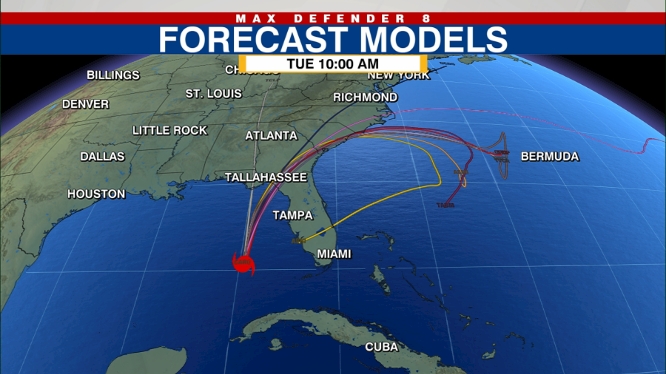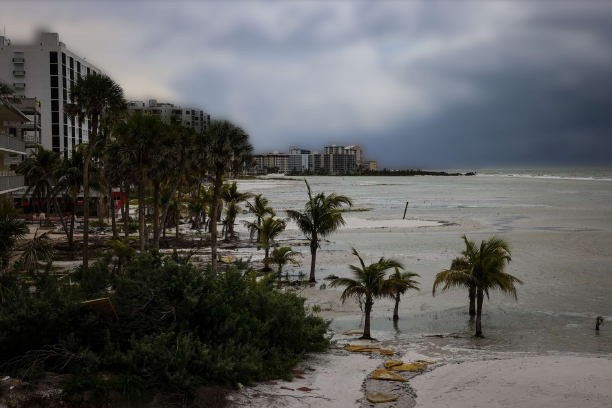Table of Contents
Hurricane Idalia’s Destructive Impact

In a fierce and unexpected onslaught, Hurricane Idalia battered Florida‘s west coast with unrelenting fury, leaving a trail of destruction and chaos in its wake. The tempest made landfall as a menacing category three storm, showcasing its might through 205 kph winds, menacing storm surges, and torrential rainfall. The impact was particularly severe, as this area was unaccustomed to such a pummeling from nature’s wrath. However, the storm’s eventual descent to a category two hurricane didn’t diminish its capacity for destruction, as it continued to unleash havoc upon the region.
Unleashing Havoc and Chaos
As the storm roared ashore, its powerful winds and relentless rain led to widespread power outages, with more than 242,000 customers left in darkness. Trees, uprooted by the force of the winds, brought down power lines, while streets were inundated by rushing water. Along the coastline, the scene was one of surreal inundation, with some homes nearly submerged to their rooftops and structures crumbling under the assault. In the hurricane’s eye’s path, signs were torn apart, and sheet metal became deadly projectiles, adding to the chaos.
Cedar Key’s Brunt of Fury
The picturesque town of Cedar Key, which found itself in the storm’s crosshairs, bore the brunt of Idalia’s fury. The fire and rescue department issued dire warnings, urging people to stay away from the area due to the fallen trees and debris-laden roads. The storm surge reached a staggering two meters, swallowing most of the downtown area and leaving behind a scene of destruction. Amidst the chaos, propane tanks erupted like volatile candles, adding to the sense of danger and urgency.
Impact on Big Bend Region

Idalia’s landfall occurred in the sparsely populated Big Bend region, where the Florida Panhandle gracefully curves into the peninsula. Emerging as a category three hurricane, the third-highest classification on the Saffir-Simpson Hurricane Wind Scale, Idalia was expected to inflict catastrophic damage. The moment of landfall, 7:45 am local time at Keaton Beach, marked a dire turning point for the ocean-front community of 13,000 residents in Taylor County, located about 121 km southeast of Tallahassee, Florida’s state capital. This area was at the heart of the Big Bend region, known for its gentle curvature bridging the northern panhandle with the Florida Peninsula
Persistence and Transition
Despite weakening slightly to a category two hurricane with maximum winds of 165 kph by 10 am, the storm maintained its potency as it forged ahead, east of Tallahassee. The impact was not confined to Florida alone; just south of Valdosta, Georgia, a vital highway, Interstate 75, was forced to shut down due to power lines that had fallen across the road. The storm’s path extended beyond state lines, with forecasts indicating that the Carolinas would face Idalia’s wrath as a tropical storm in the ensuing night. As meteorological models debated the hurricane’s next moves, one consistency emerged: Idalia’s eventual journey into the Atlantic, relinquishing its grip on the continental United States.
Evacuation and Precautions
In preparation for Idalia’s assault, Florida residents residing in vulnerable coastal zones were ordered to evacuate, recognizing the potential severity of the situation. Those who opted to remain behind were sternly cautioned to seek refuge and brace for the impending storm. The gravity of the situation wasn’t lost on authorities, who acknowledged the unprecedented nature of the event. The National Weather Service in Tallahassee noted the rarity of major hurricanes traversing the bay adjacent to the Big Bend, emphasizing the historical significance of Hurricane Idalia’s impact.
Coast Guard Readiness
The United States Coast Guard’s readiness in the face of this crisis was evident. With 15 aircraft, more than 25 cutters, and 20 flood response teams pre-positioned, Rear Admiral Douglas Schofield assured the public of their commitment to aiding those in the storm’s wake. From conducting aerial surveys to communicating with mariners, the Coast Guard remained steadfast in its mission to ensure safety and rescue. The Tampa and Big Bend regions remained focal points for urgent maritime search and rescue operations, poised to launch as the storm passed through.
Resilience in the Face of Adversity
For a state still grappling with the aftermath of the previous year’s Hurricane Ian, Idalia’s arrival was a haunting reminder of the vulnerability and resilience inherent in coastal communities. As Florida faced another daunting chapter in its storm history, its people and authorities united once more, determined to weather the tempest’s fury and emerge stronger on the other side. The tale of Hurricane Idalia became a testament to the power of nature, the importance of preparedness, and the unyielding human spirit in the face of adversity.
Read this also :
Silent Harm: 3M Earplugs’ Toll on Hearing Elicits $6 Billion Settlement in Lawsuit


